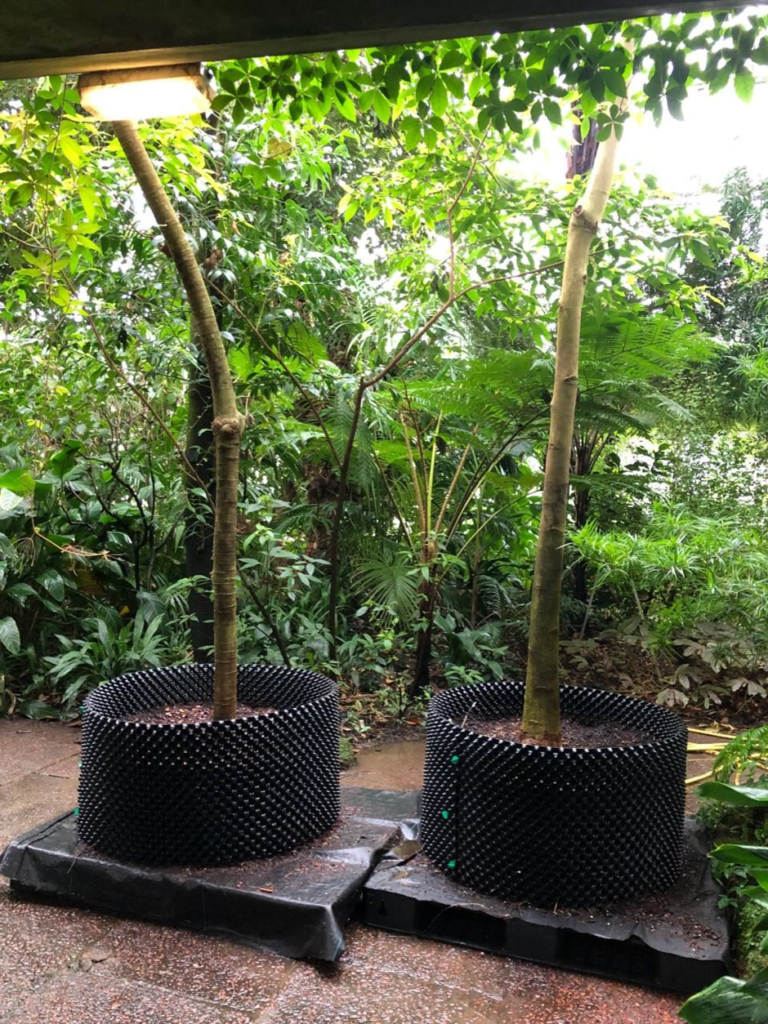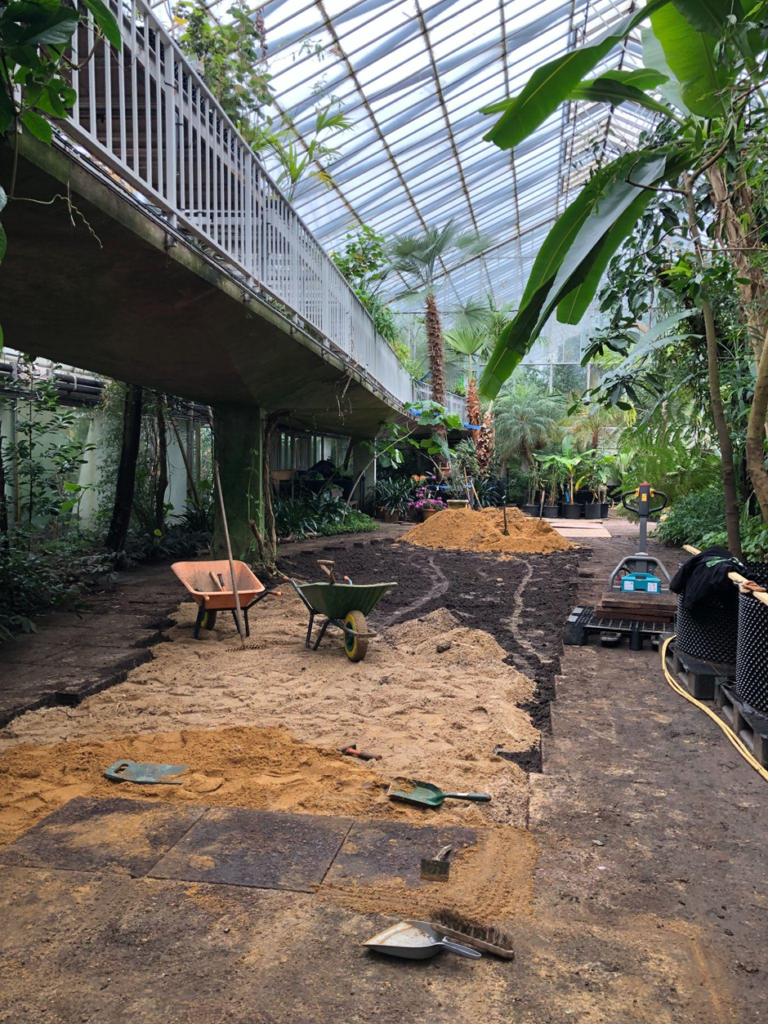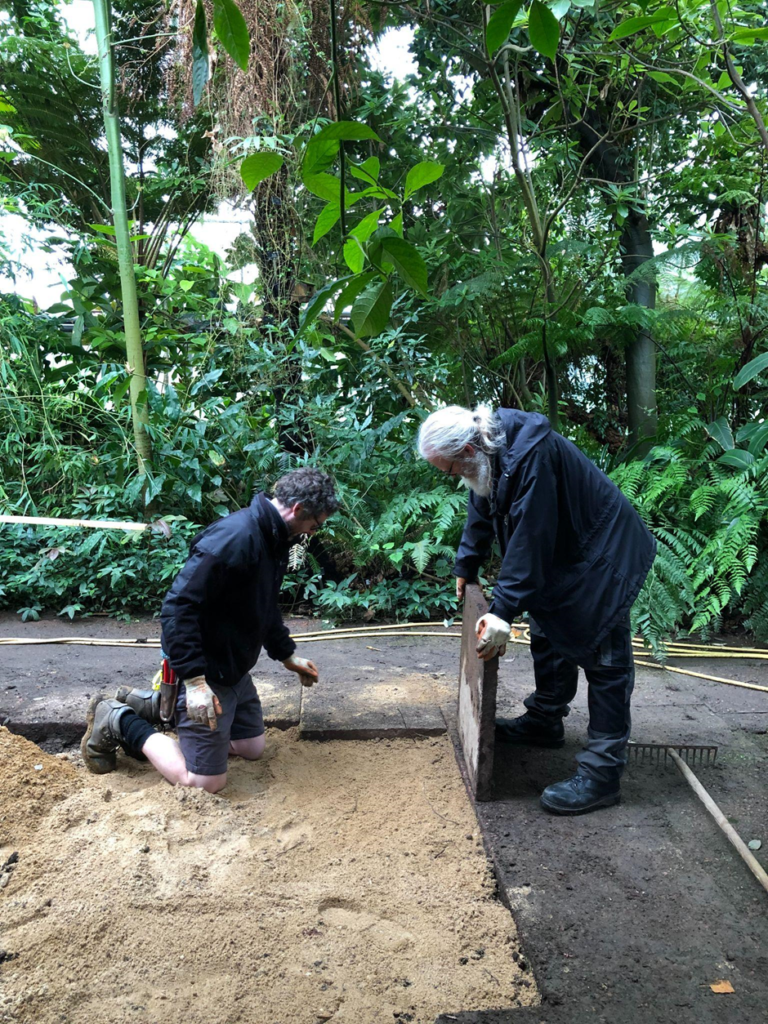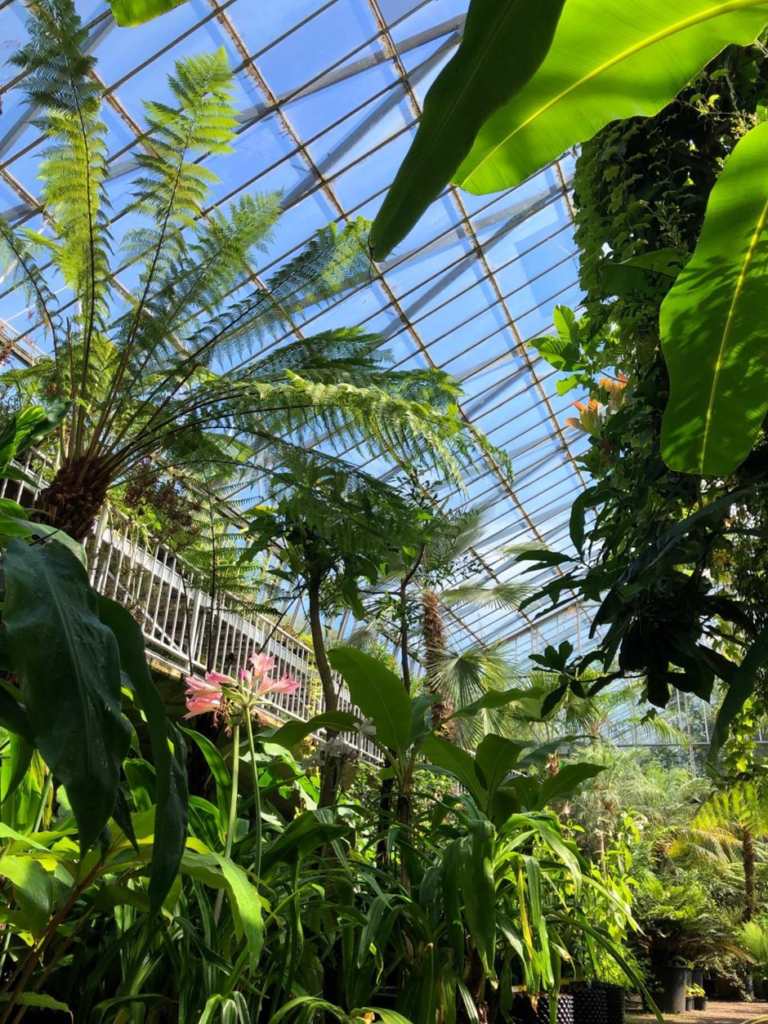
Since the start of the Edinburgh Biomes project there has been an almost constant movement of plants within and between the various Glasshouses, and part of this involves changing the Glasshouses themselves to create the best conditions for each collection. We saw in early 2021 the creation of hard standing in the Temperate Lands Glasshouse to facilitate decanting of many of the large palms from the Temperate Palm House. The main principle of open hard standing is it allows us to easily move and rearrange the potted collection as the project continues, and the open space with the added height of the Glasshouse helps us to keep a wider range of larger plants. Those plants with a larger footprint are placed onto a lined pallet as a base and can then be easily moved around with help from an electric pallet truck.

The Temperate Lands
While we are emptying other Glasshouses, the Temperate Lands Glasshouse has been growing its collection both big and small. In February 2022, it was decided that a new area of hard standing was needed to create extra space for various plants that will make their way into this temporary home over the coming months. The area decided on was a large, narrow display bed that ran just below the bridge walkway.

The first stages of work began with lifting and potting the smaller plants; most of the plants lifted were also propagated to ensure the integrity of the collection and that no plants were lost in the process. Almost 95% of the plants in this bed are of known wild origin, mostly coming from East Asia. An interesting plant of note is the wild-collected Begonia acetosella, which never flowered while it was in a pot but did flower for the first time after it was planted in the ground in this bed. Each newly lifted and potted plant is labelled, tagged and moved to another Glasshouse where conditions suit it best. Spore collections of ferns were made by horticulturists Kate Miller and Hazel France.

Many hands make light work

RIGHT: The root ball is wrapped in hessian for protection before we begin the next step
Working within the landscape of the public display houses with their long established planting and narrow pathways limits our choices of equipment at the beginning. Therefore, a lot of physical work is required to get the job done. Removing plants from such a tight space involves manoeuvring alongside important planted areas (which we will lift later when space allows) and that makes the process trickier and more time-consuming.
In the example of moving a young but established Magnolia hodgsonii, we started by digging a trench around the base of the tree, defining the root ball. Once ready, we raised the root ball to the level of the path by slowly manoeuvring it side to side filling in the then exposed area underneath with soil, before leaning it back onto the new raised step. We repeated this method on the opposite side until we reached level with the path. The root ball was then carefully spun outwards by multiple members of the team onto the prepared pallet, ready and waiting.

We have used Air-Pots® to pot up large plants during the Edinburgh Biomes decant. One benefit of the Air-Pot® material is it that we can wrap it around the root ball while it sits low to the ground on a pallet. This reduces the need for us to use machinery to lift the root ball any higher than necessary. Once cut to a suitable height and in position, we secure the Air-Pot® with screw fixings and fill it with the appropriate soil mix for the plant. This process is easily reversed for replanting, and in the meantime the root system is promoted to grow outwards rather than to spiral and become compacted over time.


We continued laying slabs for just over two weeks with many of the materials used being recycled from the changes made last year. Multiple horticultural benches from two of the now empty backup houses were dismantled and rebuilt, with large slabbing that was carefully lifted and stored away. Gravel previously used on the same benches had been kept and did not go to waste. Before laying, a base layer of gravel is spread out below a sand layer which is then levelled as each slab is laid. Once down, the thin gaps between are grouted with sand to ensure it holds its place. The whole process also involved lifting and relaying a small side path under the bridge.


With the new area complete, plants from the temperate backup Glasshouse can begin to be moved “downstairs” as part of their relocation. Whenever an individual plant is moved from one Glasshouse to another or between sub-locations within the house, its location is updated on the plant records database – and that is yet another detail of the work involved in this huge and complex project!



From work that began in late February the area has been transformed and, at the time of writing this in July 2022, now holds a diversity of size and species growing side by side. And as with the rest of the Glasshouse collections, each plant receives close and constant care from the horticultural team, even while being put through multiple rearrangements in a short time.
This Glasshouse is certain to see more change again in the near future as the tree ferns have already began their journey from The Fern House to the ever-changing Temperate Lands.

david Scott
the story gives a very detailed account of the progress.When I see the other
guides I will make sure they know about this